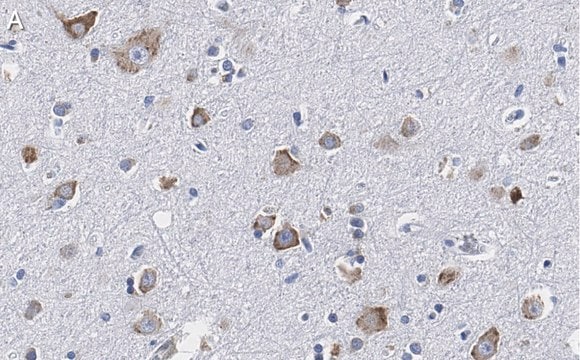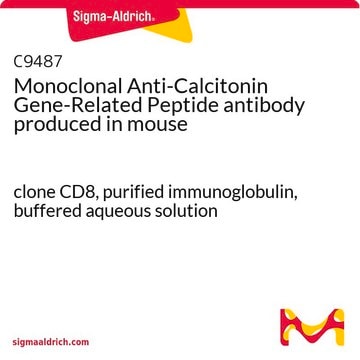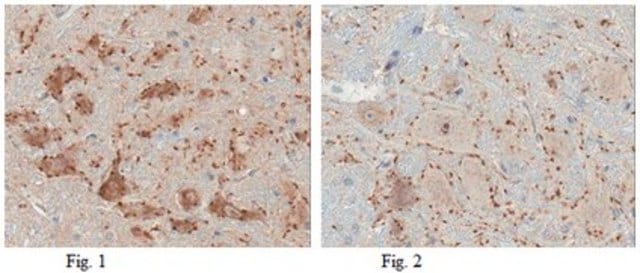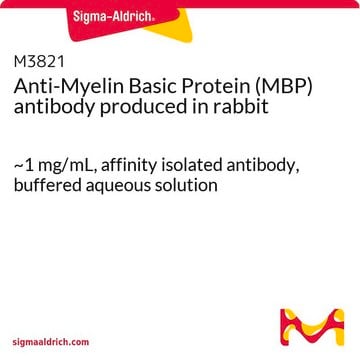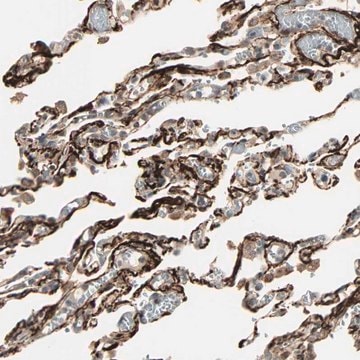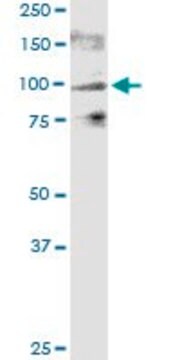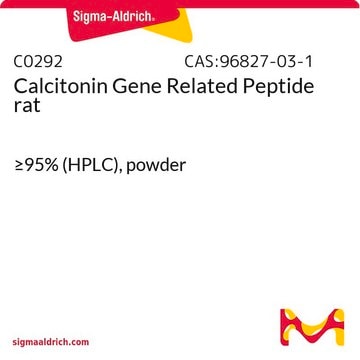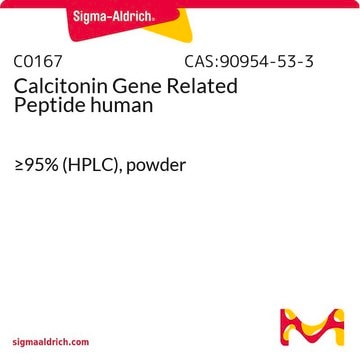C7113
Anti-Calcitonin Gene-Related Peptide antibody, Mouse monoclonal
clone 4901, purified from hybridoma cell culture
Sinónimos:
Anti-CALC, Anti-CCALCI, Anti-CGRP-I
Seleccione un Tamaño
About This Item
Productos recomendados
origen biológico
mouse
Nivel de calidad
conjugado
unconjugated
forma del anticuerpo
purified from hybridoma cell culture
tipo de anticuerpo
primary antibodies
clon
4901, monoclonal
formulario
buffered aqueous solution
reactividad de especies
rat, human, canine
envase
antibody small pack of 25 μL
concentración
~2 mg/mL
técnicas
immunocytochemistry: suitable
indirect ELISA: 0.5 μg/mL using rat α-CGRP
neutralization: suitable
radioimmunoassay: suitable
isotipo
IgG1
Nº de acceso UniProt
Condiciones de envío
dry ice
temp. de almacenamiento
−20°C
modificación del objetivo postraduccional
unmodified
Información sobre el gen
human ... CALCA(796)
rat ... Calca(24241)
Descripción general
Monoclonal Anti-Calcitonin Gene-Related Peptide (CGRP) recognizes rat α-CGRP. The antibody cross-reacts with human and dog α- and β-CGRP.
Inmunógeno
Aplicación
Immunofluorescence (1 paper)
Immunohistochemistry (1 paper)
Forma física
Cláusula de descargo de responsabilidad
¿No encuentra el producto adecuado?
Pruebe nuestro Herramienta de selección de productos.
Opcional
Código de clase de almacenamiento
10 - Combustible liquids
Clase de riesgo para el agua (WGK)
WGK 3
Punto de inflamabilidad (°F)
Not applicable
Punto de inflamabilidad (°C)
Not applicable
Certificados de análisis (COA)
Busque Certificados de análisis (COA) introduciendo el número de lote del producto. Los números de lote se encuentran en la etiqueta del producto después de las palabras «Lot» o «Batch»
¿Ya tiene este producto?
Encuentre la documentación para los productos que ha comprado recientemente en la Biblioteca de documentos.
Los clientes también vieron
Filtros activos
Nuestro equipo de científicos tiene experiencia en todas las áreas de investigación: Ciencias de la vida, Ciencia de los materiales, Síntesis química, Cromatografía, Analítica y muchas otras.
Póngase en contacto con el Servicio técnico

